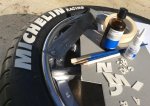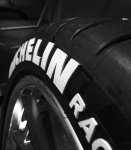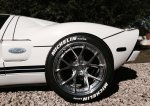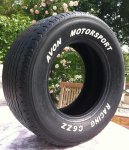+1I prefer the stagger/rake. Too much dub-donk in some of the big wheel setups IMO.
Wheel & ride height question
- Thread starter GGPatterson
- Start date
You are using an out of date browser. It may not display this or other websites correctly.
You should upgrade or use an alternative browser.
You should upgrade or use an alternative browser.
BlackICE
GT Owner
I notice all you guys with these big ass tires but no Stillen Mud guards ? Save your front and rear rockers!No need getting getting road abuse throw those babies on!They work extremely well!
:agree:
But they look best on a black or blue car and not so well on other colors.
But they look best on a black or blue car and not so well on other colors.
For the other colors, you guys need to convince jbyrnes to make more of the clear splash guards.
View attachment 33427
View attachment 33428
Love the sidewall lettering! Do you have a picture of them on your car you wouldn't mind sharing?!
Love the sidewall lettering! Do you have a picture of them on your car you wouldn't mind sharing?!
There is a thread dedicated to the RWL (raised white letters).
http://www.fordgtforum.com/forums/showthread.php/26027-Raised-white-letters-on-tires
Paint/markers have proven not to be durable. Glued-on vinyl letters work great. Pics of mine on post #70.

I have a full set of RWL's for sale for the Bridgestone's, if anyone is interested.
Saint Ho
GT Owner
Saint Ho
GT Owner

Extract from the Forum of the European Ford GT Owners Club.
HOW TO STICK RAISED LETTERS ON TIRES :
I began to study the issue two years ago, for my Cobra.
I decided to replace the original " Good year «*, beautiful but too hard, by " Avon " very effective but sad. It lacked some white writing to make them live.
I first tried painting, like the beautiful " billboards ", but despite some practice to handle pencils and brushes, the finishing has never satisfied me.
I search hard to find a solution of letters stuck in relief. After many failures with adhesives, the formula used on the Cobra is getting old with perfection after two years. So I just used it for the Michelin Pilot of the Ford GT.
IMPORTANT : To get a good result, it is essential to remove the wheels and work flat on a well-lit table.
1 / The design of the text.
In this first step, each can decide with his personal taste, and decide what he wants to write.
However I advise not to rush this phase, because the ease of implementation and perfection of the result depends of that. It is useful to test the result with a white fat pencil or with cut white paper and Scotch double-sided, before deciding.
It is important to defined carefully, the areas to glue the letters. They must be without relief ( tires are unfortunately full of all kinds of specifications in relief ), so that the letter be totally in contact with the surface of the tire. However, no problem with thin streaks hollow because the glue will fill them. May be considered to remove some reliefs by sanding, but it is better not to remove or hide the "legal" inscriptions concerning the approval of tires and their adaptation to the performance of the car.
Then choose a style of drawing and a size of letters that the cutting machine may recognize. Note that on the GT, the front and rear tires are not identical.
2 / The material and the cutting :
I chose to use a " Nitrile " white and 2mm thick. Nitrile is a synthetic rubber used in the food industry, boots, etc ... I made it cut by a machine using "water jet ". The set cost me about 0.62 € HT the letter home port included. I recommend to order a lot more than necessary to account for any accidents during installation, or repair of any friction on curbs for example.
For this production, the " Cut West " Company at Cholet in France, which I ordered via the Internet, gave me total satisfaction.
3 / The glue :
After several failures, I found a perfect solution with DELO, in Germany.
Paste : DELO-CA 2505. Sold € 52 HT by 5 bottles of 20 grams (Good for 40 wheels! ).
Preparer surface (Required ) : DELO-PRE 2005. Sold € 51 HT 100ML bottle. (Good for 12 wheels). These products are distributed in France by SYNEO at Bondoufle ( 91070 ).
4 / Surface Preparation :
The bonding area of the tire and the letters must be carefully degreased with alcohol with a lint-free tissue. Care should be taken to cut the rubber spikes that stand on the tire like hairs. The " nails cutter " makes a perfect job.
5 / Collage.
Before anything else, you will spot the location of each letter very carefully. This is a step that can not be overlooked. Indeed, a few seconds after application, the letter is so stuck, it must be destroyed to remove it. In addition, white on black, any final defect is obvious. Demanding artists are prevented.
For tires with wide flanks of the Cobra, I had to make cardboard templates. For the Michelin of the GT, things were much simpler. The sides are close and I was able to locate on a raised line running around the tire.
The second step is to extend the " preparer surface" very abundantly on the bonding area of the tire and that of each letter. To make it perfect, I recommend to do it with a " oblique light " because the product is colorless and the solvent evaporates in some seconds.
The third step is to put the glue only on the back of the letter (not on the tire). Careful application of the letter to its final location on the tire should be made in the next seconds, because the glue is immediate. Do not use «*surgeon's glove ", as it would remain stuck to the letter. It is expected to keep track of this glue on the fingers at the end of the operation. Then remove them with acetone and a pumice stone. The ideal is to manipulate the letters with tweezers or better, with a clip stamp collector, that you regularly clean with acetone. I strongly advise to train extensively for handling letters before moving on to the bonding phase. Immediately after installation of the letter, it should be pressed against the tire for a few seconds. To do this in a completely regular, using a wide blade knife and a rocking motion on the curvature of the tire, are very effective.
For those who accept to invest a lot of care and patience, it is now finished. Then you only have to enjoy .

Last edited:
Can you post pictures of your Avons on the Cobra? I have the same issues. I have billboards on mine and really don't like the ride much. They wander all over if the road has any grooves. Was planning to switch to Avons myself and wanted to see the lettering.
Otis
Otis
Saint Ho
GT Owner
cobra498
GT Owner
I think I am going to be ill, dual roll bars, hi back seats and glued on letters all in one thread.
Saint Ho
GT Owner
Thanks for the pics. How do the avons ride compared to billboards?
Otis
Hello OTIS.
Before, I had Good Year Eagle GT 2, insufficient to drive safely with the 480 hp (real) my Cobra.
Billboards are not the "Street Legal" in France. More, on small road, they do not give feelings of security, because they require permanent and brutal corrections.
In addition, for me that rolls very little, they flatten off during long parking.
I found no fault with AVON, except that they must be gently heat to get the best efficiency. I was one of the first to use them, here in France, and now quite everyone takes them, despite their high price.
Best Regards.
I think I am going to be ill, dual roll bars, hi back seats and glued on letters all in one thread.
It's called multi-tasking. 'Saves "bandwidth" I'm told (whatever that is...).
shelbyelite
PERMANENTLY BANNED
- May 10, 2007
- 1
The ones on the grey car you asked about are 19/20s, but I did them in 20/20s on my blue GT I took to the rally this last year....
beckertb
GT Owner
The ones on the grey car you asked about are 19/20s, but I did them in 20/20s on my blue GT I took to the rally this last year....
And that car looked AMAZING!






